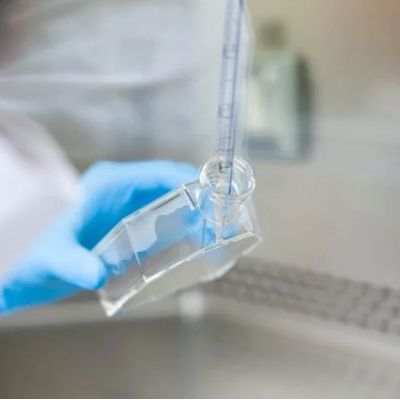

Newcells Biotech Limited
- Home
- Companies
- Newcells Biotech Limited
- Products
- Retinal Pigment Epithelium (RPE)

Retinal Pigment Epithelium (RPE)
A functional monolayer in vitro model of retinal pigment epithelial cells generated from human iPSCs for accurate prediction of clinical outcomes. The retinal pigment epithelial (RPE) cell model is composed of a monolayer of RPE cells cultured in 24-well Transwell® plates. RPE characterisation includes: morphology assessment, pigmentation, RPE-specific expression at the protein level (BEST1, TYRP1), the analysis of phagocytosis of photoreceptor outer segments, trans-epithelial resistance (TEER), polarity of apical Pigment Epithelium-Derived Factors (PEDF) and basal vascular endothelial growth factor (VEGF) secretion.
Most popular related searches
vascular endothelial growth factor
retinal pigment epithelium cells
gene therapy vectors
retinal cell
clinical outcome
retinal tissue
in vitro model
vascular endothelial
gene therapy
mrna
- Immunofluorescence
- mRNA quantification by RT-qPCR
- Transcriptomics by single-cell RNA sequencing
- Growth factor (VEGF, PEDF) secretion
- Flow cytometry
- Electron microscopy
Model formats
- Frozen human iPSC-derived RPE cells (coming soon)
- RPE cells cultured in 24-well Transwell® plates
Cell Types
- Retinal pigment epithelial (RPE) cells
Species
- Human (healthy donor)
- Human (gene-edited)
Accelerate your lead compound selection by understanding their mode of action in functional retinal tissue
- Mature and functional RPE model
- Well-characterised and reproducible
- Rapid evaluation of gene therapy vectors
